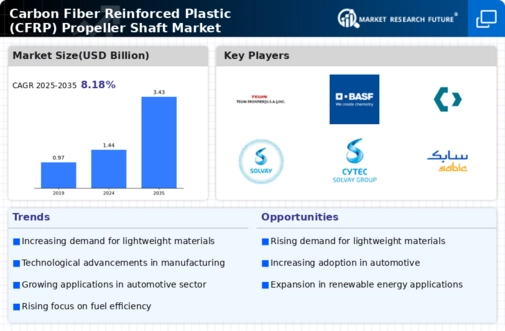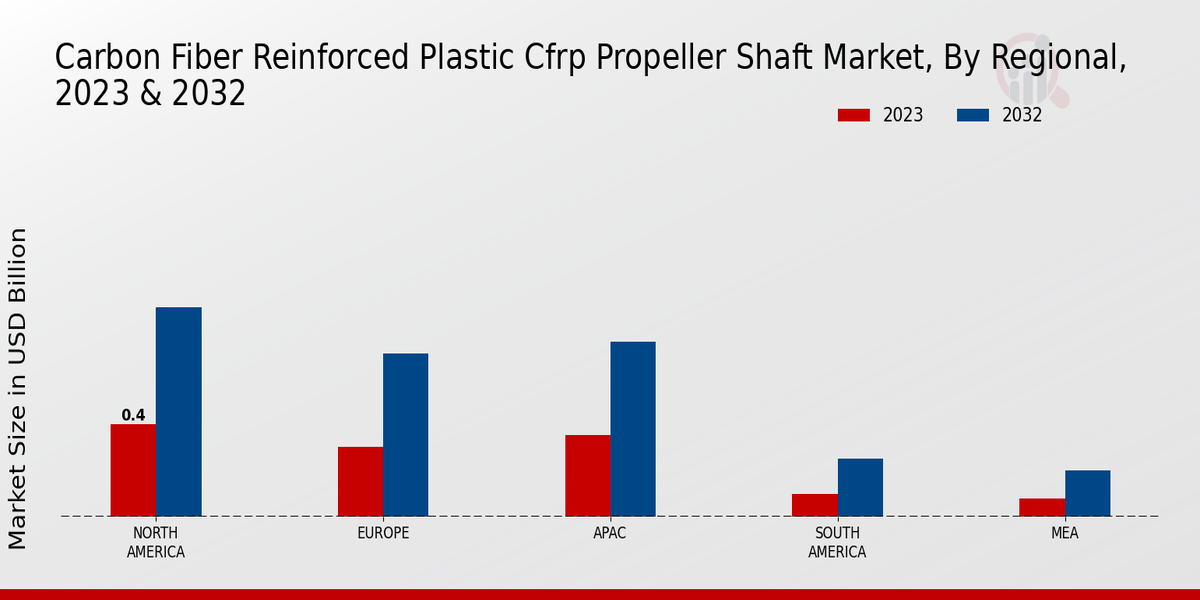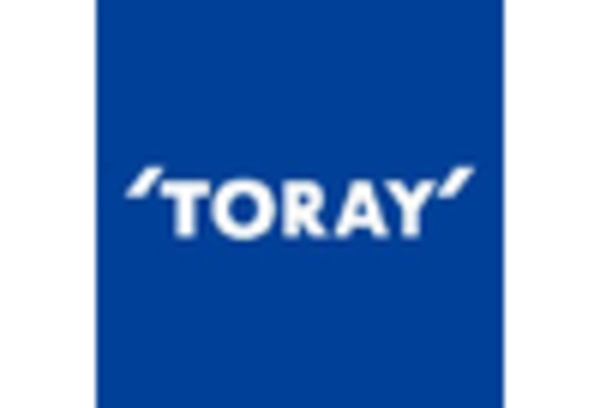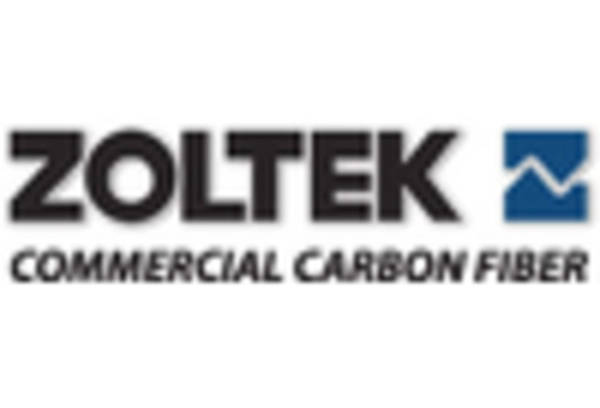Technological Innovations
Technological advancements in manufacturing processes and material science are likely to propel the Carbon Fiber Reinforced Plastic (CFRP) Propeller Shaft Market. Innovations such as automated fiber placement and advanced resin systems have improved the efficiency and performance of CFRP products. These technologies enable the production of complex geometries and enhance the mechanical properties of CFRP shafts, making them more appealing to manufacturers. Additionally, the integration of smart technologies, such as sensors within CFRP components, could provide real-time data on performance and maintenance needs. This evolution in technology not only enhances the functionality of CFRP propeller shafts but also positions them as a competitive alternative to traditional materials, potentially increasing market share.
Sustainability Initiatives
The increasing emphasis on sustainability within various industries appears to drive the Carbon Fiber Reinforced Plastic (CFRP) Propeller Shaft Market. As organizations strive to reduce their carbon footprints, the lightweight and durable nature of CFRP materials presents a viable solution. The use of CFRP propeller shafts can lead to enhanced fuel efficiency in marine and automotive applications, thereby reducing emissions. Furthermore, the shift towards renewable energy sources, such as wind and solar, necessitates the use of advanced materials like CFRP in turbine components and other applications. This trend is likely to bolster the demand for CFRP propeller shafts, as manufacturers seek to align with environmental regulations and consumer preferences for sustainable products.
Regulatory Support and Standards
Regulatory frameworks and standards promoting the use of advanced materials are likely to influence the Carbon Fiber Reinforced Plastic (CFRP) Propeller Shaft Market positively. Governments and regulatory bodies are increasingly recognizing the benefits of CFRP in terms of performance and environmental impact. Initiatives aimed at reducing greenhouse gas emissions and enhancing energy efficiency are encouraging industries to adopt CFRP solutions. Compliance with these regulations often necessitates the use of advanced materials, thereby driving demand for CFRP propeller shafts. As industries adapt to these regulatory changes, the market for CFRP products is expected to expand, providing manufacturers with new opportunities to innovate and meet evolving standards.
Increased Investment in Research and Development
Investment in research and development (R&D) within the materials science field is likely to enhance the Carbon Fiber Reinforced Plastic (CFRP) Propeller Shaft Market. As companies strive to develop new applications and improve existing products, R&D initiatives are crucial. This investment not only leads to the discovery of novel CFRP formulations but also optimizes production techniques, thereby reducing costs. Furthermore, collaborations between academic institutions and industry players are fostering innovation, resulting in advanced CFRP solutions tailored for specific applications. The ongoing focus on R&D is expected to yield breakthroughs that could expand the market for CFRP propeller shafts, making them more accessible and appealing to a broader range of industries.
Growing Demand in Aerospace and Automotive Sectors
The aerospace and automotive sectors are experiencing a surge in demand for lightweight and high-strength materials, which is likely to benefit the Carbon Fiber Reinforced Plastic (CFRP) Propeller Shaft Market. In aerospace applications, CFRP propeller shafts contribute to weight reduction, which is critical for improving fuel efficiency and overall performance. The automotive industry is also shifting towards CFRP components to enhance vehicle performance and reduce emissions. According to recent data, the automotive sector's adoption of CFRP is projected to grow at a compound annual growth rate of over 10 percent in the coming years. This trend indicates a robust market potential for CFRP propeller shafts, as manufacturers seek to innovate and meet regulatory standards.


















Leave a Comment